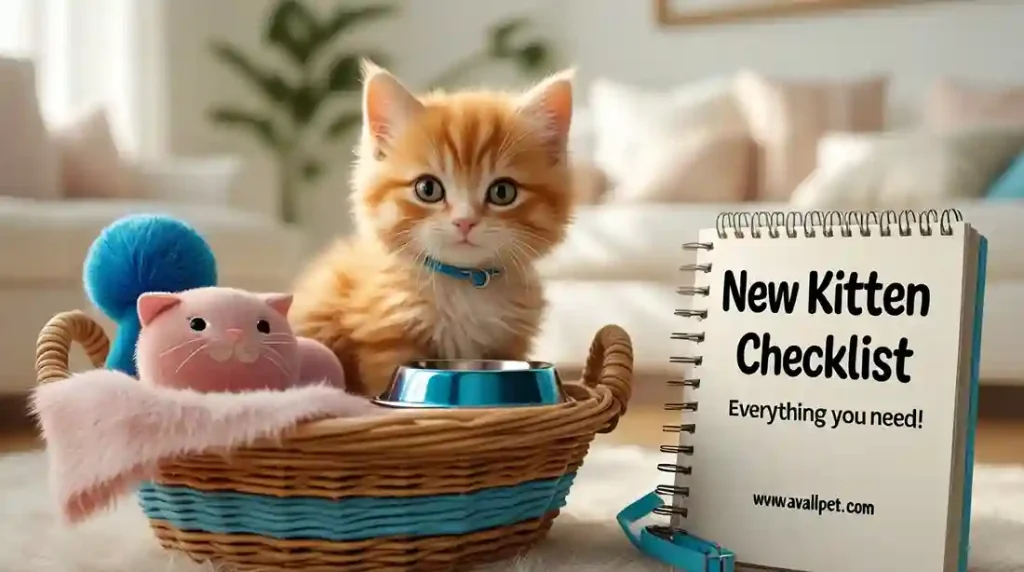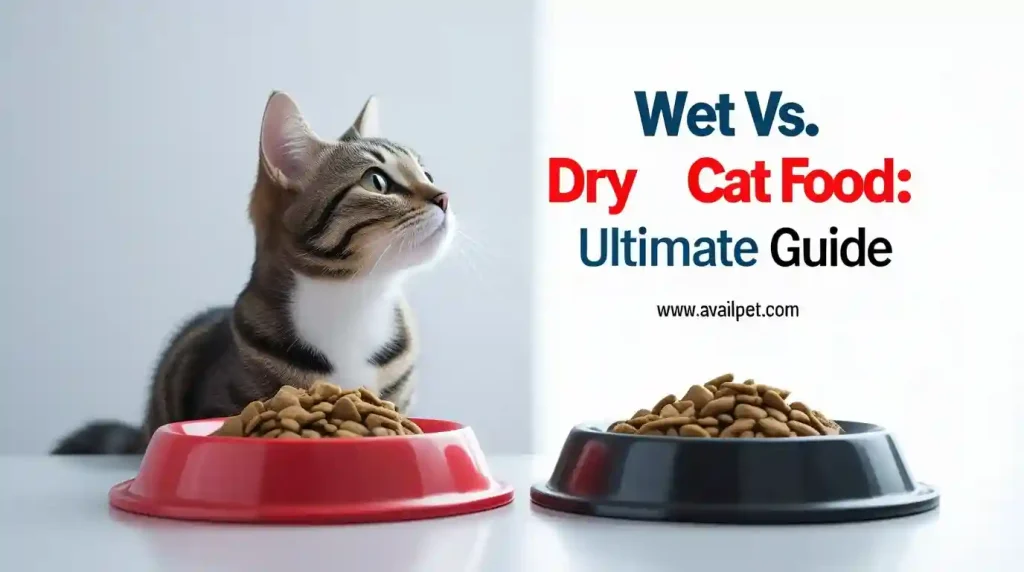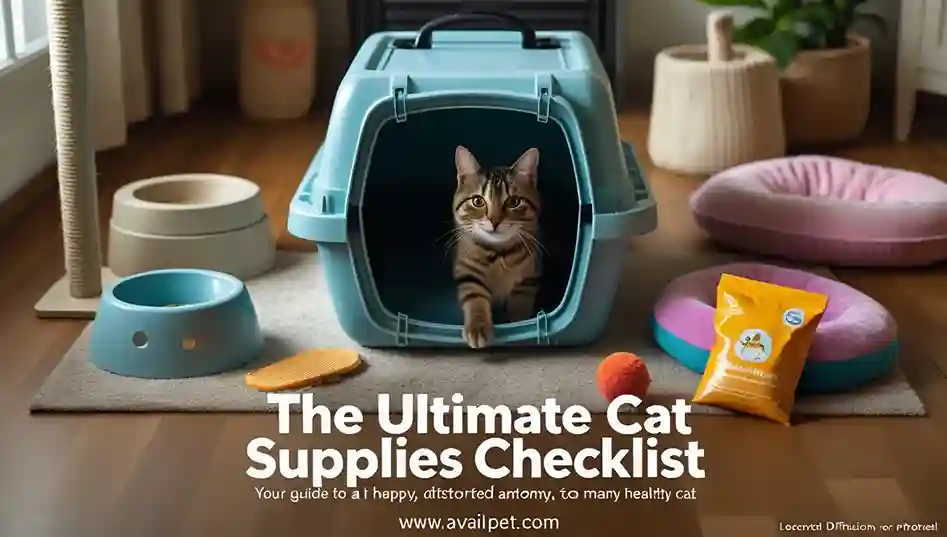Watching your cat strain in the litter box, cry in pain, or make endless trips with no results is a heart-wrenching experience for any pet owner. Feline Lower Urinary Tract Disease (FLUTD) is more than just an inconvenience; it’s a painful and potentially dangerous condition that demands immediate attention and the right long-term strategy.
The food you choose plays a pivotal role, acting as either a trigger or a treatment. But with so many “urinary health” formulas on the market—from over-the-counter bags to veterinary prescriptions—how can you possibly know which one is truly best for your cat?
You’ve come to the right place for answers. This guide cuts through the confusion, offering vet-reviewed, evidence-based recommendations for the best cat food for urinary health. Our goal is to empower you with the knowledge to have an informed conversation with your veterinarian and make the best decision for your feline friend’s well-being.
Understanding Feline Urinary Tract Health
If you’re here, you’re likely worried about your cat’s well-being. Feline Lower Urinary Tract Disease (FLUTD) isn’t a single disease but a term that covers a range of conditions affecting your cat’s bladder and urethra. It’s a common and often painful issue that requires immediate attention.
The most common culprits behind FLUTD include:
- Feline Idiopathic Cystitis (FIC): Inflammation of the bladder with no identifiable cause, often linked to stress.
- Urinary Tract Infections (UTIs): Bacterial infections in the bladder or urethra.
- Bladder Stones (Uroliths): Hard mineral formations that can irritate the bladder lining or cause a life-threatening blockage. The two most common types are:
- Struvite Stones: Often formed in alkaline urine.
- Calcium Oxalate Stones: Typically formed in acidic urine.
Key Dietary Factors for a Healthy Urinary Tract
While stress and other factors play a role, diet is one of the most powerful tools you have to support your cat’s urinary health. The right food can influence several key factors:
- Moisture Content: This is the most critical element. A high-water intake produces more dilute urine, which helps flush out the bladder and prevents the concentration of minerals and irritants that can lead to crystals and stones. This is a primary reason wet cat food is so often recommended for urinary health.
- Controlled Mineral Levels: Diets formulated for urinary health carefully balance minerals like Magnesium (Mg), Phosphorus, and Calcium to prevent the formation of struvite and calcium oxalate crystals.
- Urine pH Balance: Food can influence whether your cat’s urine is acidic or alkaline. Struvite stones tend to form in alkaline urine, while oxalate stones form in acidic urine. Urinary diets are designed to maintain a slightly acidic pH (around 6.0-6.4) that discourages crystal formation.
- Targeted Ingredients: Many urinary foods include supplements like Omega-3 fatty acids (to reduce inflammation) and Glucosamine (to help repair and protect the bladder lining).
What Are Struvite and Oxalate Crystals?
Understanding the difference between these two common crystals is key, as it directly influences dietary treatment.
- Struvite Crystals are comprised of magnesium, ammonium, and phosphate. They can often be dissolved with a special prescription diet that creates acidic, dilute urine and restricts the minerals that form them. This is a non-surgical treatment option.
- Calcium Oxalate Crystals form from calcium and oxalate. Unlike struvites, they cannot be dissolved by diet. The goal of a urinary diet in this case is to prevent new stones from forming by managing urine chemistry and dilution.
Our Top Picks: Best Cat Food for Urinary Health
Navigating the world of urinary cat food can be overwhelming. To simplify your search, our team of veterinary experts has reviewed the scientific data and clinical evidence to bring you these top-tier recommendations.
A Quick Note: We’ve provided links to Amazon for your convenience. As an Amazon Associate Affiliate, AvailPet earns from qualifying purchases. This supports our work at no extra cost to you. Remember, a veterinary diagnosis and prescription are essential for the prescription diets listed below.
1. Best Overall Prescription Diet: Hill’s Prescription Diet c/d Multicare
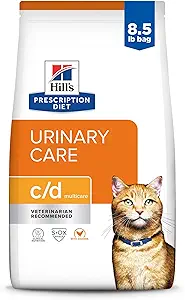
- Form: Wet & Dry
- Type: Prescription Required
- Key Benefit: Clinically proven to dissolve struvite stones and reduce the risk of calcium oxalate crystals.
- ✅ Check Price & Availability: View on Amazon
What Our Vets Say:
Hill’s c/d Multicare is often considered the gold standard. Its unique formulation is clinically proven to create a urinary environment that dissolves struvite stones in as little as 14 days and helps prevent the recurrence of all types of stones.
2. Best for Dissolving Struvite Stones: Royal Canin Veterinary Diet Urinary SO
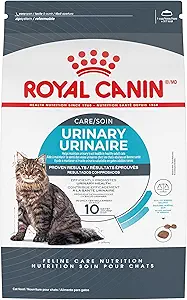
- Form: Wet & Dry
- Type: Non-Prescription
- Key Benefit: Highly effective at dissolving struvite stones and maintaining urinary health.
- ✅ Check Price & Availability: View on Amazon
What Our Vets Say:
Royal Canin Urinary SO is a powerhouse for tackling struvite uroliths. It’s formulated to induce a dilute, acidic urine profile that rapidly dissolves struvite stones and prevents their reformation.
3. Best Over-the-Counter (Non-Prescription) Option: Purina Pro Plan Urinary Tract Health
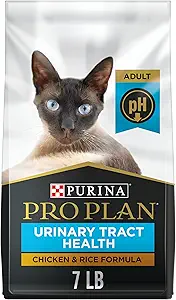
- Form: Dry
- Type: Non-Prescription
- Key Benefit: An accessible, high-quality option for overall urinary tract support.
- ✅ Check Price & Availability: View on Amazon
What Our Vets Say:
This is our top pick for an over-the-counter urinary food. It is an excellent choice for maintenance and prevention in cats with a history of FLUTD, containing controlled mineral levels to support a healthy urinary pH.
4. Best Wet Food Option: Hill’s Science Diet Urinary + Hairball Control
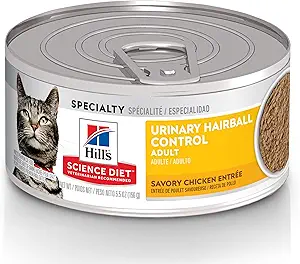
- Form: Wet
- Type: Non-Prescription
- Key Benefit: Combines urinary support with hairball management in a high-moisture format.
- ✅ Check Price & Availability: View on Amazon
What Our Vets Say:
For cats that prefer wet food or need the extra hydration, this is a stellar choice. It provides all the benefits of high moisture content to support dilute urine, along with controlled magnesium levels and added fiber for hairballs.
5. Best for Picky Eaters: Blue Buffalo Natural Veterinary Diet W+U
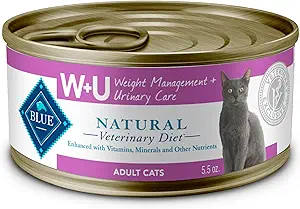
- Form: Wet
- Type: Prescription Required
- Key Benefit: A grain-free, natural prescription option with high palatability.
- ✅ Check Price & Availability: View on Amazon
What Our Vets Say:
Some cats turn their noses up at traditional prescription diets. Blue Buffalo’s W+U formula offers a compelling alternative with its natural ingredients and real meat, ensuring even fussy felines get the therapeutic nutrition they need.
Comparison Table: Best Urinary Cat Foods at a Glance
Use this table to quickly compare our top picks based on their key features and ideal use case.
| Product | Type | Form | Primary Benefit | Best For |
| Hill’s c/d Multicare | Prescription | Wet & Dry | Dissolves struvite & prevents all stone types | Best Overall for comprehensive urinary care under vet guidance. |
| Royal Canin Urinary SO | Prescription | Wet & Dry | Rapidly dissolves struvite stones | Dissolving Struvites quickly and effectively. |
| Purina Pro Plan Urinary | Non-Prescription | Dry | Supports urinary health with controlled minerals | Over-the-Counter Maintenance for cats with a history of issues. |
| Hill’s Urinary + Hairball | Non-Prescription | Wet | High moisture & hairball control | Wet Food Lovers who also need hairball management. |
| Blue Buffalo W+U | Prescription | Wet | Natural ingredients, highly palatable | Picky Eaters who need a grain-free prescription diet. |
Remember, a veterinary diagnosis and prescription are essential for the prescription diets listed below.
How We Selected These Foods: Our Vet-Reviewed Criteria
At AvailPet, we understand that trusting your cat’s health to an online resource is a significant decision. That’s why our recommendations are not based on opinion alone. We employ a rigorous, multi-factor evaluation process developed with veterinary professionals to ensure we only suggest products that are safe, effective, and scientifically backed.
Here are the key criteria every food on our list had to meet:
Scientific Formulation & Clinical Proof:
This is our non-negotiable top priority. We prioritize foods that have undergone controlled feeding trials and have published clinical data supporting their claims, especially for prescription diets. Brands like Hill’s and Royal Canin invest heavily in research, and that evidence is paramount for our trust.
Veterinary Recommendation & Brand Reputation:
We lean heavily on brands with a long-standing, trusted reputation within the veterinary community. A product’s widespread use and recommendation by practicing veterinarians for specific conditions is a powerful testament to its real-world efficacy and safety.
Ingredient Quality & Nutritional Adequacy:
Beyond the specialized urinary health benefits, the food must be nutritionally complete and balanced according to AAFCO standards. We assess the quality of protein sources, the appropriateness of carbohydrates, and the absence of unnecessary fillers, artificial colors, or preservatives.
Palatability & Real-World Feedback:
The best food is useless if your cat won’t eat it. We analyze consistent feedback from countless user reviews and veterinary reports to gauge a product’s acceptance among felines, especially the notoriously picky ones.
Safety & Recall History:
We diligently review the brands’ historical data concerning FDA recalls and consumer safety complaints. A strong track record of quality control and manufacturing safety is essential for making our list.
By applying this consistent framework, we provide you with confident, trustworthy recommendations you can rely on for your cat’s health.
Understanding Urinary Diets: A Deeper Dive
Now that you’ve seen our top picks, it’s essential to understand why these foods work and how to choose the right path for your cat. Not all urinary diets are created equal, and using them incorrectly can be ineffective or even harmful.
Prescription vs. Over-the-Counter: What’s the Real Difference?
This is the most critical distinction for a cat owner to understand.
Prescription (Therapeutic) Diets:
These are powerful medical tools, not just food. They are formulated to precisely alter the urine’s chemistry (pH), dissolve specific types of stones (like struvite), and strictly control mineral levels. You need a veterinarian’s prescription because:
- They require a diagnosis: Using a dissolution diet for calcium oxalate stones (which don’t dissolve) is useless.
- They can be imbalanced: They are designed to be fed for specific conditions and may not be appropriate for healthy cats long-term.
- They are potent: Their effects on urine pH and mineral excretion are significant and medically necessary.
Over-the-Counter (Non-Prescription) Diets:
These are best described as “urinary support” or “preventative” formulas. They are excellent for:
- Cats with a history of FLUTD who are now stable.
- General prevention in breeds prone to urinary issues.
- Encouraging a healthy urinary environment through controlled minerals and added moisture.
- Crucially, they are not designed to treat active infections or dissolve existing stones.
The Bottom Line: If your cat has a current, diagnosed issue like stones or a stubborn UTI, a prescription diet is mandatory. For ongoing maintenance and prevention in an otherwise healthy cat, a high-quality over-the-counter option can be sufficient.
The Critical Role of Water: Wet vs. Dry Food for Urinary Health
We cannot overstate this: Hydration is the cornerstone of urinary health.
Cats are naturally designed to get most of their water from their food. When they eat a dry diet, they must compensate by drinking more, which their low thirst drive often prevents. This leads to highly concentrated urine, which is a primary risk factor for crystal and stone formation.
- Wet Food: Typically contains about 75-80% moisture. It directly increases your cat’s total water intake, leading to more dilute urine that flushes the bladder more effectively.
- Dry Food: Contains only about 10% moisture. While some urinary dry foods are excellent, their success depends on the cat drinking a significant amount of additional water.
For a complete breakdown of the pros and cons, see our ultimate guide on Wet vs. Dry Cat Food. For any cat with urinary concerns, incorporating wet food into their diet is one of the most beneficial steps you can take.
Urinary Emergency: When to See a Vet Immediately
While diet is a powerful tool for long-term management, it is not a substitute for emergency veterinary care. Some urinary symptoms constitute a life-threatening medical emergency, especially for male cats.
If you notice any of the following signs, seek immediate veterinary attention. Do not wait.
- Straining to Urinate with Little or No Output: This is the hallmark sign of a urethral blockage, where a stone or plug obstructs the tube that carries urine out of the body. This is fatal within 24-48 hours if untreated.
- Frequent Trips to the Litter Box: Your cat may be entering the box every few minutes, staying in a straining position for a long time, and producing only a few drops or nothing at all.
- Vocalizing or Crying in the Litter Box: This is a clear sign of significant pain and distress.
- Blood in the Urine (Hematuria): While sometimes a sign of a simple UTI, it can also indicate stones, a severe infection, or other serious issues.
- Licking the Genital Area Excessively: An attempt to soothe pain or discomfort.
- Lethargy, Vomiting, or Hiding: These are general signs of a cat in a systemic crisis. A blockage can cause a dangerous buildup of toxins in the bloodstream.
What to Expect at the Vet Visit
Knowing what will happen can help reduce your anxiety during an emergency. Your veterinarian will act quickly to:
- Perform a Physical Exam: They will gently feel your cat’s abdomen, which will often reveal a painfully distended, firm bladder.
- Run Diagnostic Tests:
- Urinalysis: To check for crystals, blood, bacteria, and urine pH.
- Bloodwork: To assess kidney function and check for electrolyte imbalances caused by a blockage.
- X-rays or Ultrasound: To visualize the bladder and urethra, confirming the presence, size, and type of stones or a blockage.
- Provide Emergency Treatment: For a blockage, this involves sedating your cat and passing a catheter to relieve the obstruction and flush the bladder. They will also provide pain management, IV fluids, and hospitalize your cat for monitoring.
Understanding this process underscores why a timely vet visit is non-negotiable. The goal of a urinary health diet is to prevent these emergencies from ever happening.
Supporting Your Cat’s Urinary Health Beyond Food
While the right diet is the cornerstone of urinary health, a multi-faceted approach is often the most effective strategy. Managing your cat’s environment and lifestyle can significantly reduce flare-ups and support overall well-being.
1. Prioritize Hydration from All Sources
Even if you feed wet food, encouraging more water intake is always beneficial.
- Invest in a Cat Water Fountain: The moving, aerated water is more appealing to a cat’s instincts and can encourage them to drink more frequently.
- Multiple Water Stations: Place several clean, wide water bowls in quiet, accessible locations around your home, away from their litter box and food.
- Add Water To Food: Consider adding a tablespoon or two of extra water or low-sodium chicken broth to your cat’s wet food to create a gravy.
2. Manage Stress and Environmental Enrichment
Feline Idiopathic Cystitis (FIC) is strongly linked to stress. A calm, enriched cat is a healthier cat.
- Provide Vertical Space: Cat trees, shelves, and window perches give your cat a sense of security and territory.
- Ensure Adequate Resources: Follow the “n+1” rule for multi-cat households: one litter box, food bowl, and water bowl per cat, plus one extra, placed in different locations.
- Schedule Playtime: Daily interactive play sessions with wand toys help relieve stress and provide mental stimulation.
3. Maintain Impeccable Litter Box Hygiene
A dirty or inconvenient litter box can cause a cat to hold their urine, concentrating it and increasing the risk of problems.
- Scoop Twice Daily: Remove waste promptly.
- Clean Thoroughly Weekly: Wash boxes with mild, unscented soap and hot water. Avoid harsh chemicals.
- Choose the Right Setup: Most cats prefer large, open boxes with unscented, clumping litter.
By combining a targeted diet with these supportive care strategies, you create a holistic plan that addresses the root causes of urinary issues and promotes a lifetime of health.
FAQs About Best Cat Food for Urinary Health
What are the most common signs of a cat UTI?
The most common signs include straining to urinate, frequent trips to the litter box with little output, crying or vocalizing while urinating, blood in the urine (pink or red-tinged), and excessive licking of the genital area. If you see these signs, contact your veterinarian.
Can I use urinary food to treat an active infection?
No. While urinary food is excellent for prevention and creating a healthy bladder environment, an active bacterial infection requires prescription antibiotics from a veterinarian. Food alone cannot kill bacteria. Using the right food alongside medication is the best approach.
How long does it take for urinary cat food to work?
For preventing future issues, it’s a lifelong management strategy. For dissolving struvite stones, prescription diets like Hill’s c/d or Royal Canin Urinary SO can show results on X-rays in as little as 2 to 4 weeks. Your vet will typically schedule a recheck to monitor progress.
Are there any side effects when switching to a urinary diet?
When transitioning slowly over 7-10 days, most cats adjust well. Some may experience temporary, mild digestive upset like soft stool. The most significant “side effect” is a change in urine pH and volume, which is the intended therapeutic effect. Always consult your vet if you have concerns.
Is wet or dry food better for a cat with urinary problems?
Wet food is generally superior for cats with a history of urinary problems. Its high moisture content (75-80%) is the single most important factor in producing dilute urine and flushing the bladder. While some dry urinary diets are effective, they rely on the cat drinking ample water, which is less reliable. A combination of both is often a good compromise.
Conclusion & Final Recommendation
Navigating your cat’s urinary health can feel daunting, but you are now equipped with the knowledge to be a proactive advocate for their well-being. The journey always begins with a professional veterinary diagnosis to identify the specific issue, whether it’s FIC, a UTI, or crystals.
Our top pick, Hill’s Prescription Diet c/d Multicare, stands out for its comprehensive, clinically proven approach to dissolving struvite stones and preventing recurrence. However, the best choice is the one your veterinarian recommends for your cat’s unique needs.
Remember the core principles:
- Moisture is Non-Negotiable: Prioritize wet food or find ways to significantly increase your cat’s water intake.
- Prescription Diets are Medical Tools: They are powerful and necessary for treating active conditions like stones.
- Holistic Care Matters: A stress-free environment, clean water, and proper litter box management are essential supports to any dietary change.
By combining veterinary guidance with a targeted diet and supportive care, you can help your cat achieve lasting urinary health and get back to a happy, comfortable life.
Sources
- Cornell Feline Health Center: “Feline Lower Urinary Tract Disease.”
- ACVIM Consensus Statement: “Treatment and Prevention of Uroliths in Dogs and Cats.” (2016).
- WSAVA Global Nutrition Guidelines:
- Hill’s c/d Multicare Product Info
- Royal Canin Urinary SO Product Info
- Purina Pro Plan Urinary Product Info
A Critical Disclaimer from Our Veterinarians: This article is for informational purposes and is reviewed by a veterinary professional. However, urinary issues can constitute a medical emergency, especially for male cats who are prone to life-threatening blockages. Always consult your veterinarian for a diagnosis and treatment plan before changing your cat’s diet. The recommendations here are intended to be used under veterinary guidance.

